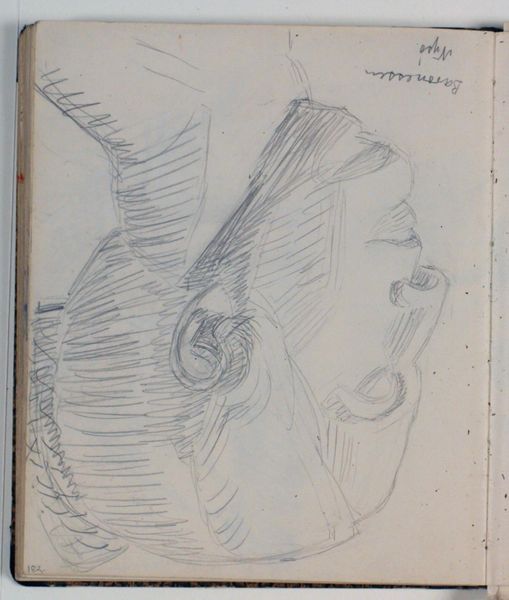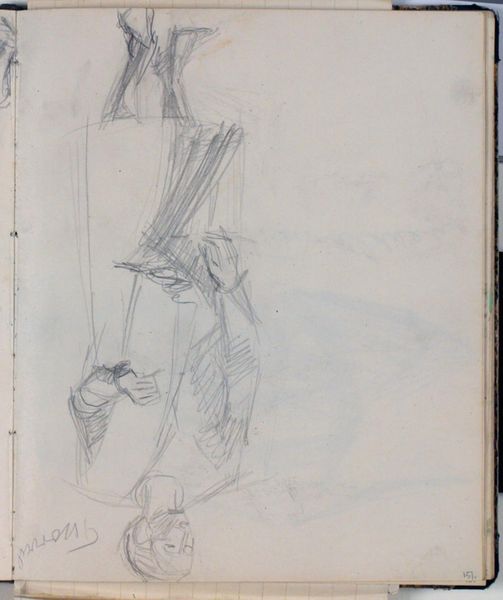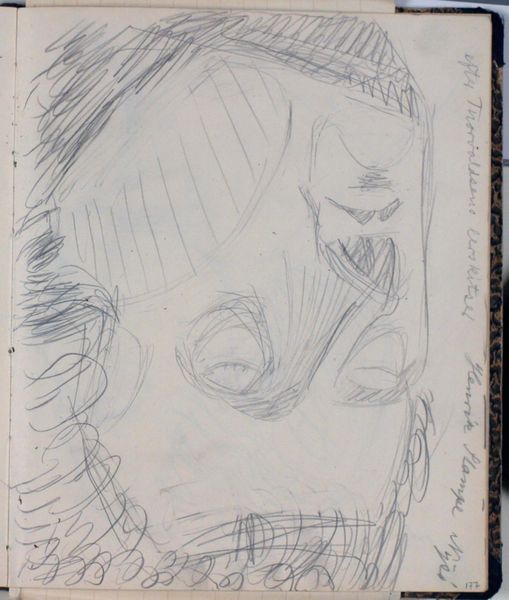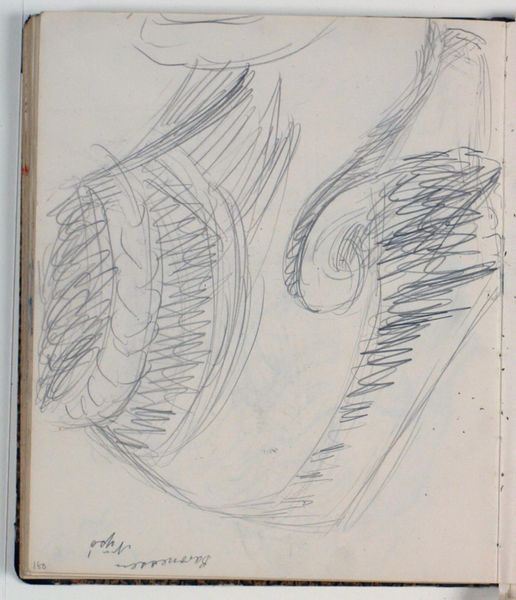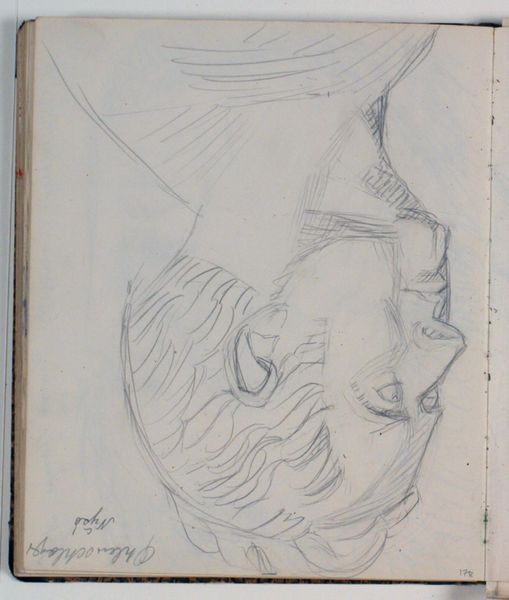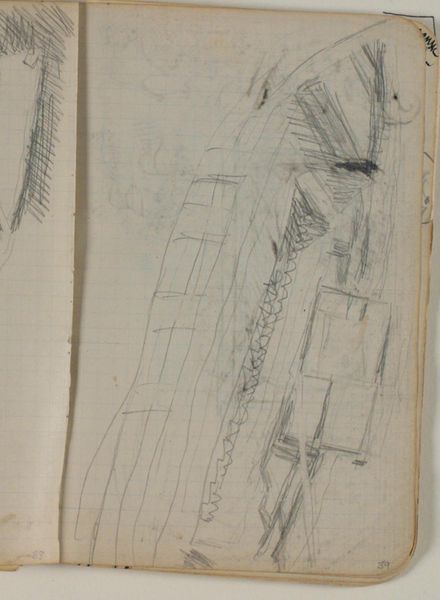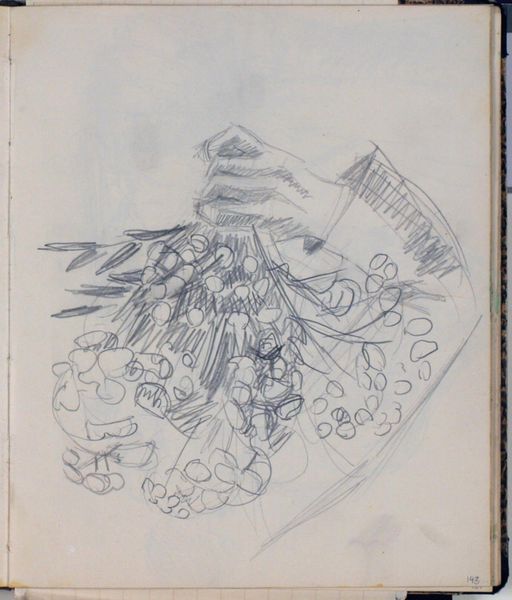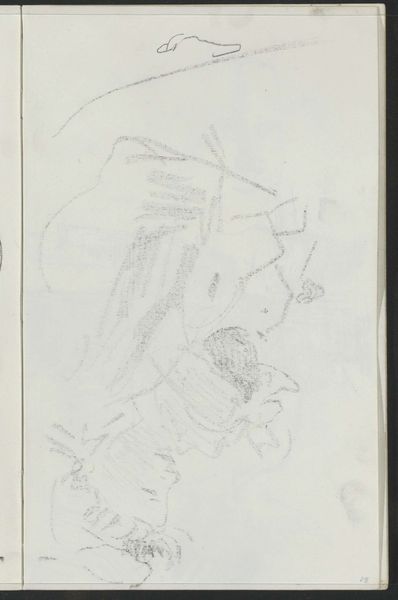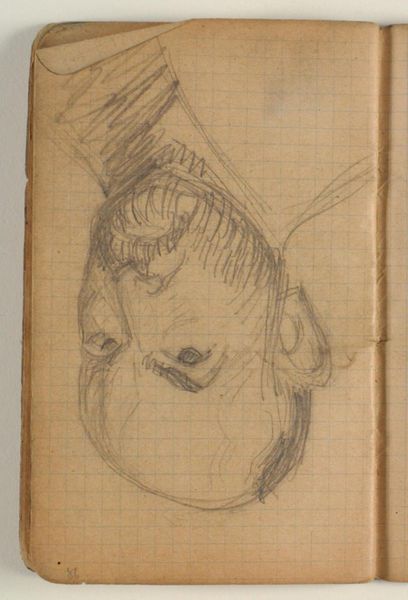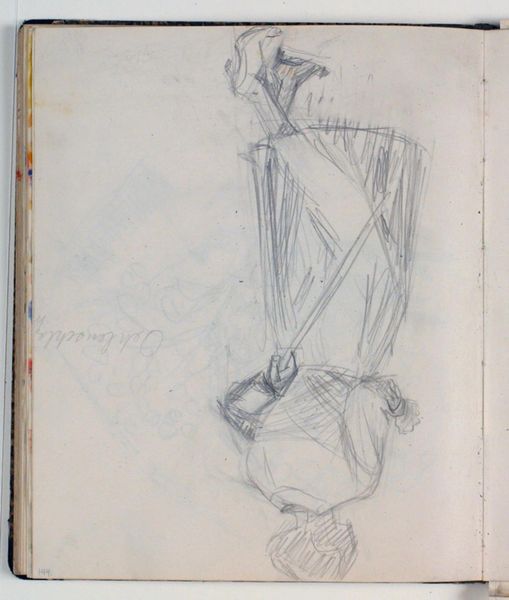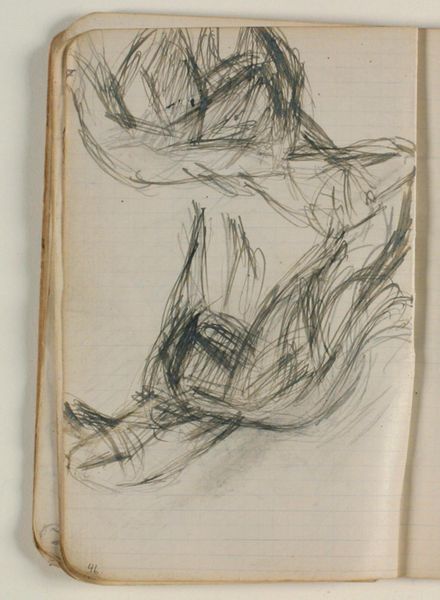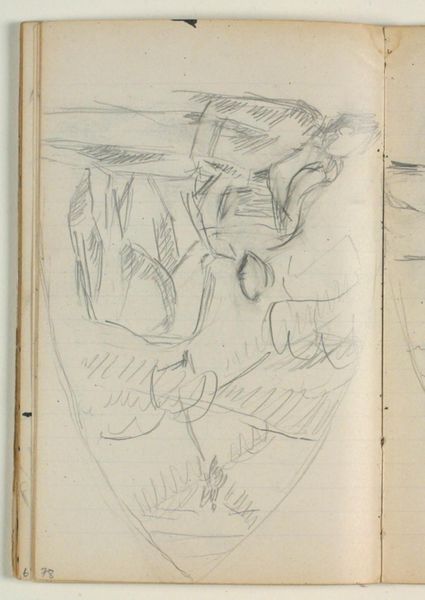
Studie af Baron H. Stampe efter tegning af Constantin Hansen (?) 1930 - 1936
0:00
0:00
drawing, pencil
#
portrait
#
drawing
#
pencil sketch
#
figuration
#
pencil
#
portrait drawing
Dimensions: 226 mm (height) x 185 mm (width) x 112 mm (depth) (monteringsmaal), 221 mm (height) x 184 mm (width) (bladmaal)
Curator: This drawing, attributed to Niels Larsen Stevns, is entitled 'Studie af Baron H. Stampe efter tegning af Constantin Hansen (?)' It was created sometime between 1930 and 1936. Editor: What strikes me is the incredible delicacy of the pencil work. The artist captures the baron's likeness with the lightest touch, almost ethereal in its execution. Curator: The question of authorship adds another layer to its interest. It's believed to be Stevns' study of an original drawing by Constantin Hansen, making it an artwork commenting on another artwork. This relates to the Royal Danish Academy and to the reproduction and distribution of artworks throughout Denmark at that time. Editor: It is like a ghost of an image. I am particularly drawn to the hatching technique, so skillfully used to define form and shadow with minimal lines, all rendered in pencil. Curator: The subject himself, Baron Stampe, would likely have been a prominent figure in Danish society. His representation here says a lot about the prevailing aesthetic preferences in portraiture of the period. You see how Stevns renders him as an important member of the upper-classes, the beard particularly indicating status and maturity. Editor: It's also how Stevns uses light. See how it rakes across the Baron's face, accentuating the planes and creating a sense of depth and volume. It gives the drawing such presence. Curator: Indeed. These sketches, in addition to a primary function as portraits of well-known figures, contributed greatly to shaping perceptions and consolidating cultural values among a broad audience. Editor: Yes. For me it highlights that simple materials, skillfully employed, can still move and intrigue. The suggestive nature of the unfinished sketch almost engages the viewer's imagination to complete the composition. Curator: It speaks volumes about how art functions in Danish culture, through subject and material, and how deeply images reflect socio-political realities, and I hope our discussion offers a glimpse into understanding this study within that broader context. Editor: And hopefully to offer insight into the artist's sensitivity in how he manages to make minimal marks contribute maximum expressiveness.
Comments
No comments
Be the first to comment and join the conversation on the ultimate creative platform.
